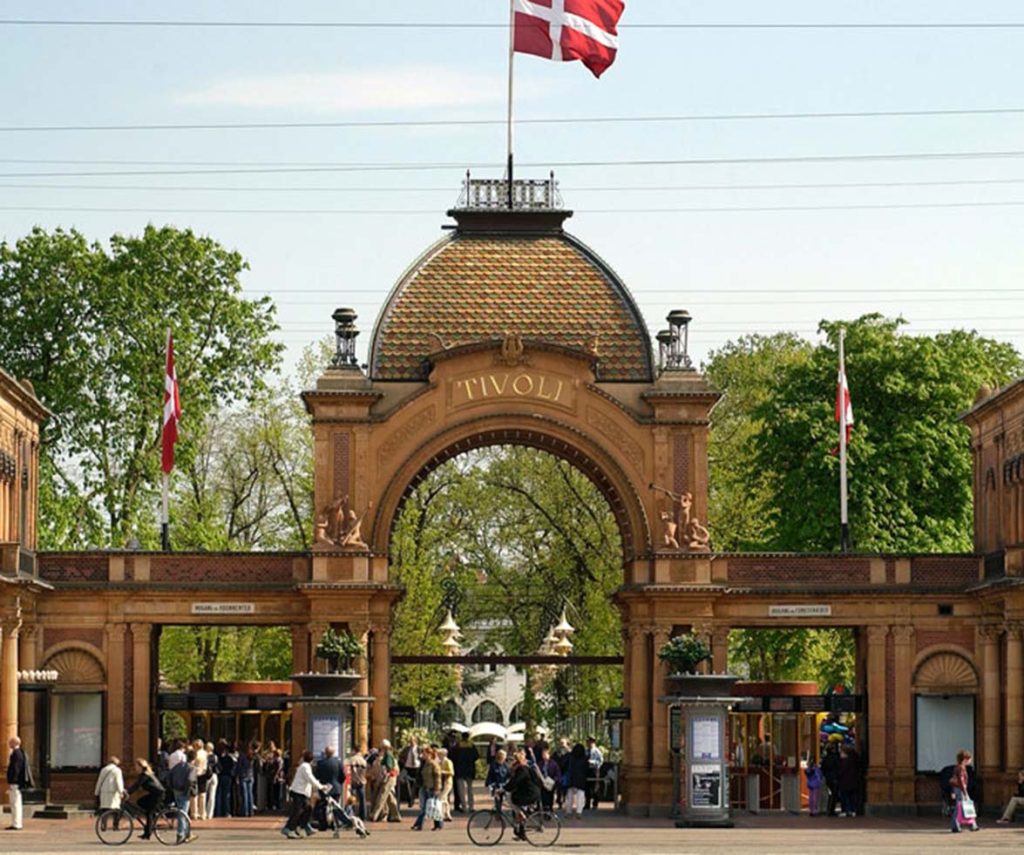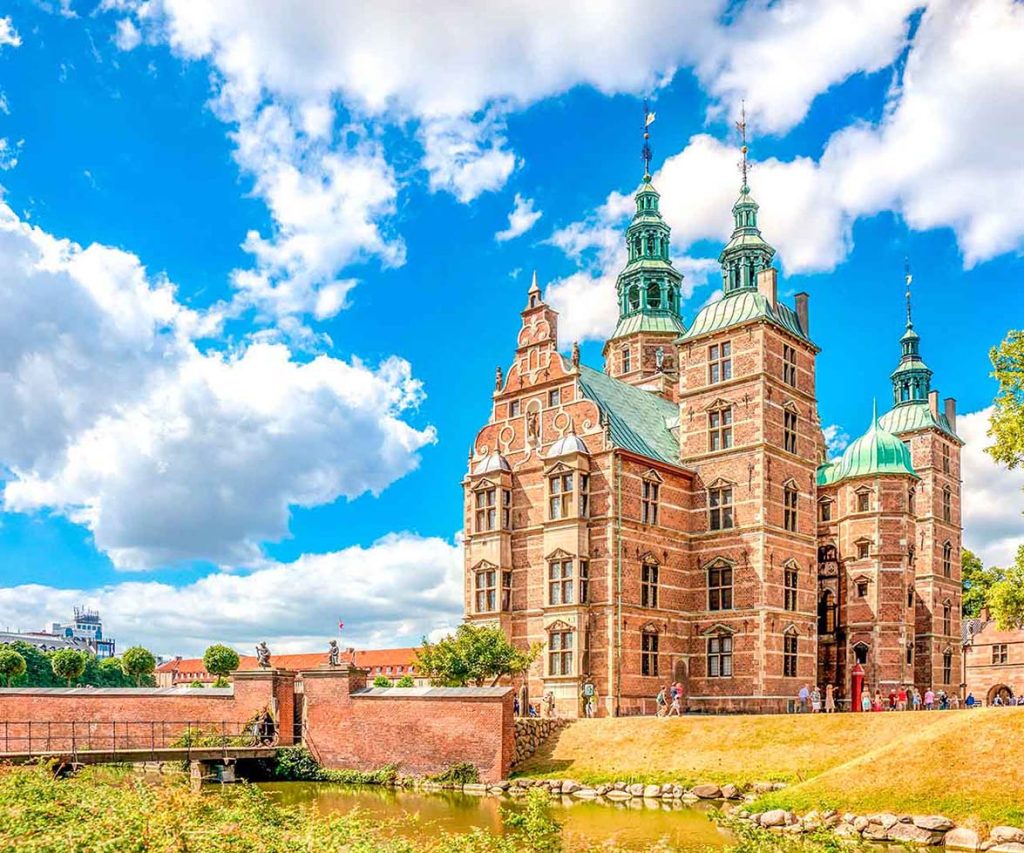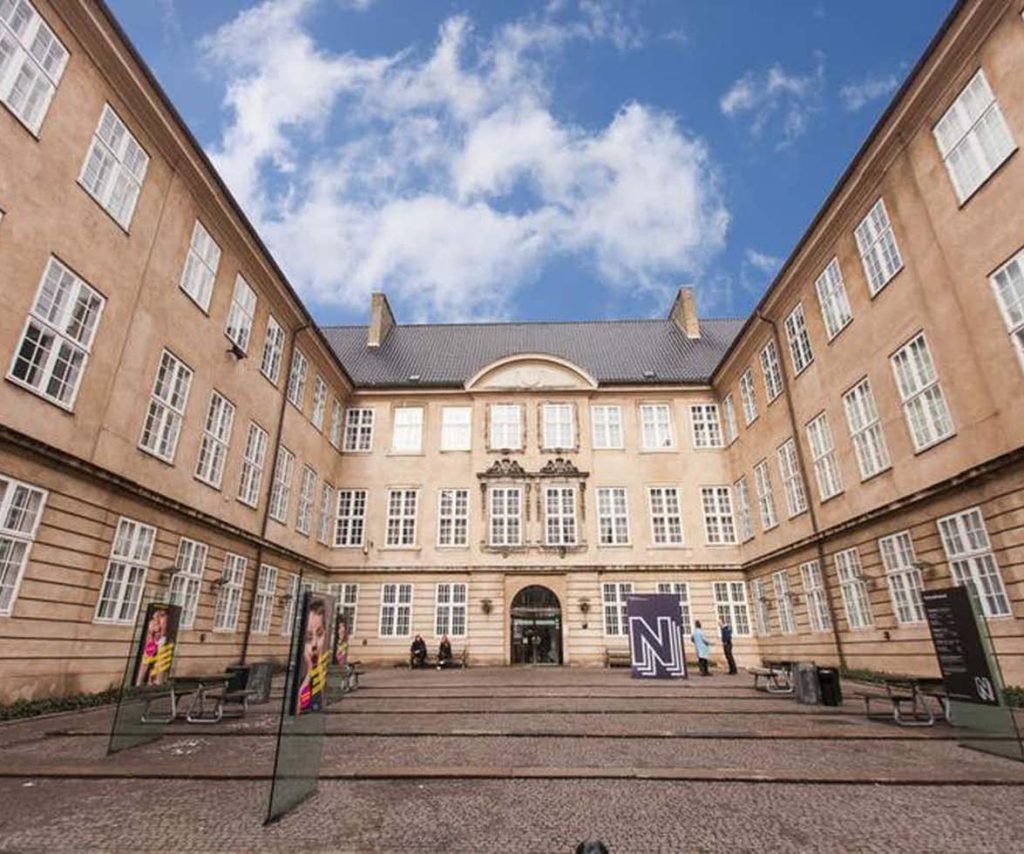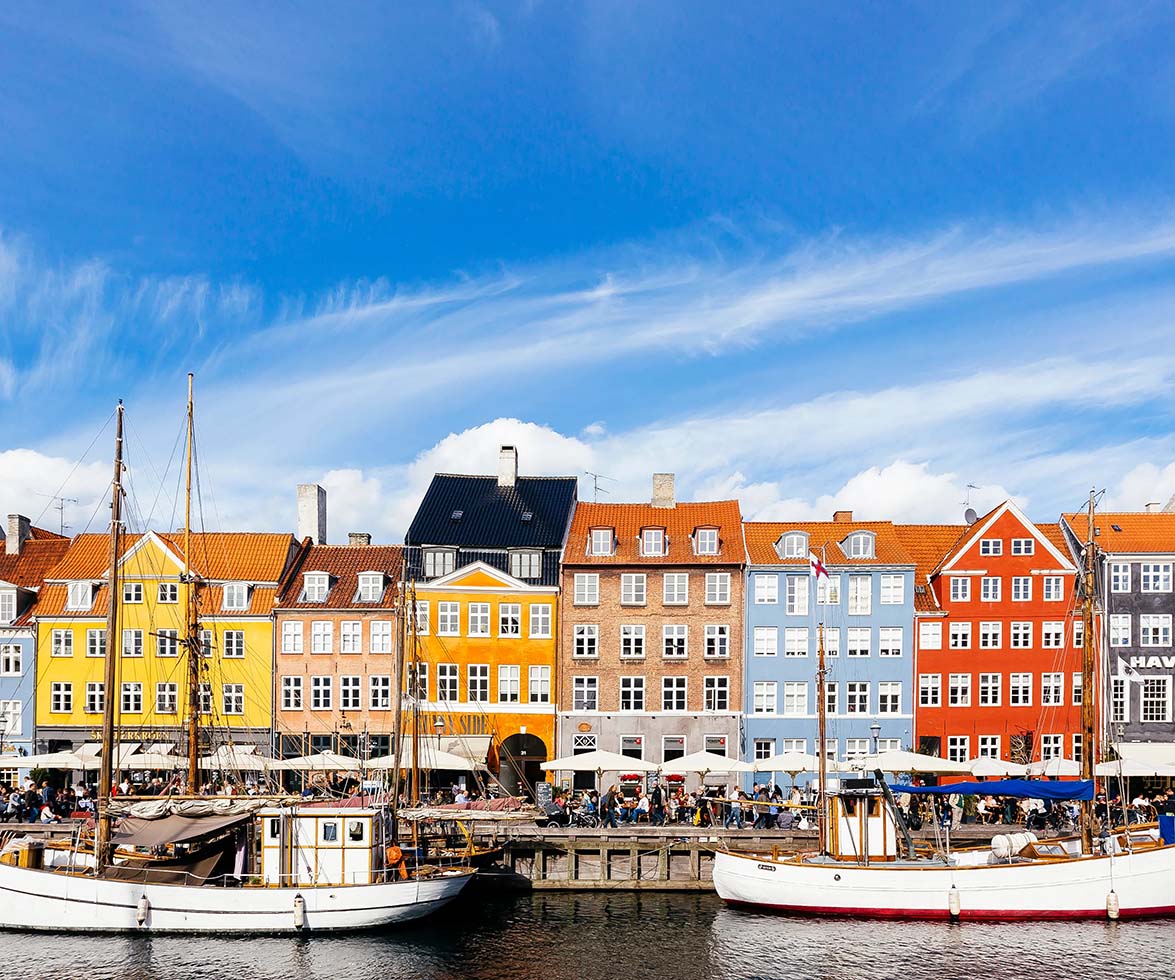Copenhagen, Denmark’s vibrant capital, is a city where historic charm meets modern sophistication. With its picturesque canals, world-class museums, and rich cultural heritage, Copenhagen offers something for every type of traveler. Whether you’re a history enthusiast, a food lover, or an art aficionado, the Danish capital has a diverse range of attractions to explore.
1. Tivoli Gardens
Founded in 1843, Tivoli Gardens is one of the world’s oldest amusement parks and a true Copenhagen landmark. It’s not just a theme park but also a historical and cultural experience that attracts visitors of all ages.

What to See:
- Rides and Attractions: Tivoli offers a mix of classic and modern rides, including the historic wooden roller coaster, Rutschebanen, and the more contemporary Star Flyer, which provides stunning views of the city.
- Gardens and Architecture: The park’s beautifully landscaped gardens are perfect for a leisurely stroll. The architecture, including the Moorish-style Pantomime Theatre and the charming Tivoli Hotel, adds to the park’s enchanting atmosphere.
- Seasonal Events: Tivoli is known for its seasonal decorations and events. In winter, the park transforms into a winter wonderland with festive lights and Christmas markets, while summer features outdoor concerts and cultural performances.
Tips for Visiting:
- Tickets: Buy tickets online in advance to avoid long queues. There are options for single-entry tickets or multi-ride passes.
- Timing: Visit in the late afternoon or evening to experience the park when it’s beautifully lit up, especially during the holiday seasons.
- Dining: The park has various dining options, from fine dining restaurants to casual food stalls.
2. Nyhavn
Nyhavn, or New Harbor, is one of Copenhagen’s most iconic and picturesque locations. Dating back to the 17th century, this vibrant waterfront area is lined with colorful townhouses, historic wooden ships, and lively cafes.
What to See:
- Historic Architecture: The brightly colored buildings along the canal are perfect for photography and evoke the historic charm of Copenhagen.
- Canal Tours: Take a boat tour from Nyhavn to explore the city from the water. The canal tours offer a unique perspective on Copenhagen’s landmarks, including the Little Mermaid and the Opera House.
- Dining and Entertainment: Nyhavn is home to numerous cafes, restaurants, and bars. Enjoy a meal or a drink with a view of the canal and soak up the lively atmosphere.
Tips for Visiting:
- Best Time: Early morning or late afternoon is ideal to avoid crowds. Nyhavn can get very busy, especially in summer.
- Dining: Try some traditional Danish dishes like smørrebrød (open-faced sandwiches) at one of the waterfront restaurants.
- Photography: The best lighting for photos is during the golden hour—shortly after sunrise or before sunset.
3. The Little Mermaid
Inspired by Hans Christian Andersen’s famous fairy tale, the Little Mermaid statue is one of Copenhagen’s most recognized landmarks. Located at Langelinie Pier, this bronze statue has been a symbol of the city since its unveiling in 1913.
What to See:
- The Statue: The statue depicts the mermaid in a serene pose, reflecting her longing for human love. Despite its relatively modest size, it’s an important cultural icon.
- Surroundings: The pier offers a pleasant walk along the water and provides a great vantage point for taking photographs of the statue and the surrounding harbor.
Tips for Visiting:
- Crowds: The statue is a popular tourist spot, so try to visit early in the morning or later in the evening to avoid large crowds.
- Walking Tour: Combine your visit with a walk around the Langelinie promenade, where you can enjoy views of the harbor and the nearby Kastellet fortress.
4. Rosenborg Castle
Rosenborg Castle, built in the early 17th century by King Christian IV, is a Renaissance castle located in the King’s Garden (Kongens Have). It houses the Danish crown jewels and royal regalia.

What to See:
- Interior Rooms: Explore the opulent interiors, including the Great Hall with its stunning tapestries and the Knight’s Hall, which showcases the Danish crown jewels.
- King’s Garden: The surrounding garden is one of Copenhagen’s oldest and most beautiful green spaces, ideal for a leisurely stroll or picnic.
- Royal Collections: The castle also features an impressive collection of historical artifacts, including royal portraits and ornate furniture.
Tips for Visiting:
- Tickets: Purchase tickets online or at the entrance. A combined ticket for the castle and the adjacent Treasury is available.
- Guided Tours: Consider joining a guided tour to gain deeper insights into the history of the castle and its royal occupants.
- Best Time to Visit: The castle can be busy during peak tourist season, so aim for early morning or late afternoon visits.
5. Christiansborg Palace
Christiansborg Palace, located on Slotsholmen island, is a major landmark that serves as the seat of the Danish Parliament, the Supreme Court, and the Prime Minister’s Office. The palace has a rich history dating back to the 12th century.
What to See:
- Royal Reception Rooms: Explore the opulent rooms used for state functions and royal ceremonies, including the Throne Room and the Great Hall.
- The Tower: Climb the tower for panoramic views of Copenhagen and the surrounding area.
- The Palace Chapel: Visit the Chapel, which is used for royal christenings and other ceremonies.
Tips for Visiting:
- Tickets: Book tickets in advance, especially if you plan to visit during the summer tourist season.
- Tours: Join a guided tour to fully appreciate the historical and political significance of the palace.
- Events: Check the palace’s schedule for any special events or exhibitions during your visit.
6. The National Museum of Denmark
The National Museum of Denmark, located in a historic building in the city center, is Denmark’s largest museum of cultural history. It offers extensive collections that cover Danish and global history.

What to See:
- Danish Prehistory: Explore exhibits on Denmark’s Viking history and ancient artifacts from the Stone Age to the Middle Ages.
- Global Collections: The museum also features artifacts from around the world, including collections on Egypt, Asia, and the Americas.
- Children’s Museum: The museum includes a section designed for children, offering interactive exhibits and activities.
Tips for Visiting:
- Tickets: Admission to the National Museum is free, though special exhibitions may require a ticket.
- Audio Guides: Consider using an audio guide or joining a tour to enhance your understanding of the exhibits.
- Time: Allocate at least a few hours to fully explore the museum’s diverse collections.
7. The Round Tower (Rundetårn)
The Round Tower, built in the 17th century by King Christian IV, is an iconic Copenhagen landmark. It is one of the oldest observatories in Europe and offers great views of the city.
What to See:
- Observation Deck: Climb the spiral ramp to the top for panoramic views of Copenhagen. The observatory is also used for stargazing events.
- Exhibition Space: The tower houses an exhibition space that often features contemporary art and historical exhibits.
- Library Hall: Visit the Library Hall, which houses a collection of old books and manuscripts.
Tips for Visiting:
- Tickets: Purchase tickets at the entrance or online in advance. The climb to the top is accessible via a gradual ramp.
- Best Time: Visit on a clear day for the best views of the city.
- Events: Check the tower’s schedule for any special events or exhibitions that may coincide with your visit.
8. Amalienborg Palace
Amalienborg Palace is the official residence of the Danish royal family and consists of four identical classical palace façades surrounding an octagonal courtyard. It’s located in the heart of Copenhagen.
What to See:
- The Courtyard: Watch the changing of the guard ceremony, which takes place daily at noon. The ceremony is a popular attraction and provides insight into Danish royal traditions.
- The Royal Palace: While the palace itself is not open to the public, you can visit the nearby Amalienborg Museum to learn about the royal family’s history and see royal apartments and artifacts.
Tips for Visiting:
- Timing: Arrive a bit early to secure a good spot for watching the changing of the guard.
- Museum Visit: Combine your visit with a trip to the Amalienborg Museum for a more in-depth look at royal life.
9. Botanical Garden (Botanisk Have)
The Botanical Garden, located near the city center, is a serene escape from the urban bustle. It features a diverse collection of plants and offers a peaceful environment for relaxation and exploration.
What to See:
- Greenhouses: The garden’s historic greenhouses house a variety of exotic plants, including tropical and subtropical species.
- Outdoor Gardens: Explore themed gardens such as the herb garden, rock garden, and rose garden.
- Walking Paths: Enjoy the walking paths that wind through the beautifully landscaped grounds.
Tips for Visiting:
- Admission: Entrance to the garden is free, though there may be a fee for special exhibitions or guided tours.
- Seasonal Visits: The garden is lovely year-round, but the spring and summer months offer the best floral displays.
10. Louisiana Museum of Modern Art
Located about 35 kilometers north of Copenhagen, the Louisiana Museum of Modern Art is one of Denmark’s most renowned art institutions. It offers a stunning blend of modern art and scenic views of the Øresund Strait.
What to See:
- Art Collections: Explore a diverse collection of modern and contemporary art, featuring works by artists such as Picasso, Warhol, and Danish contemporaries.
- Sculpture Park: The museum’s sculpture park, set in a beautifully landscaped garden, provides a perfect backdrop for outdoor art.
- Architectural Design: The museum’s architecture, designed to harmonize with its natural surroundings, is an attraction in itself.
Tips for Visiting:
- Tickets: Purchase tickets online or at the entrance. Consider a day trip if you have time to explore the museum’s extensive collections.
- Transport: There are train and bus options for traveling to the museum from Copenhagen. Check the museum’s website for details on transportation.
Copenhagen is a city brimming with history, culture, and vibrant life. From the enchanting Tivoli Gardens and the iconic Little Mermaid statue to the grand Rosenborg Castle and the serene Botanical Garden, there’s no shortage of attractions to explore. Each landmark and attraction offers a unique glimpse into the city’s rich heritage and modern charm. Whether you’re a first-time visitor or a seasoned traveler, Copenhagen promises an unforgettable experience filled with delightful discoveries.
